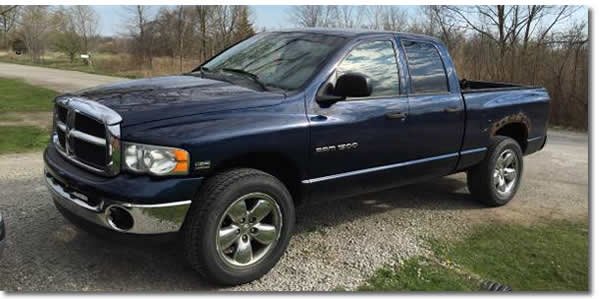
I have got a code p0430. I changed the spark plugs and coils along with bank1 sensor1 O2 Sensor. The Code is still appearing. Next we are fixing to remove the catalytic converter on passenger side. Asking your opinion?
First after looking at the code and its description (below) I see that Bank 2 is the problem side. I also see that you replaced an O2 sensor on Bank 1. Was that in an attempt to clear this code or was that for a different code issue? I think before you replace anything else you might follow the diagnostic testing procedure below. This should help guide you in the right direction.
Dodge Code P0430
Code P0430 Description
Catalyst Efficiency Below Threshold Bank 2
Code P0430 Diagnostic Testing
1. Active DTC – Diagnostic Trouble Code
Note: A new rear O2 Sensor along with an aging front O2 Sensor may cause the DTC to set. Review the repair history of the vehicle before continuing.
Note: If an O2 Sensor DTC set along with the Catalytic Converter Efficiency DTC diagnose the O2 Sensor DTC before continuing.
Note: Check for contaminants that may have damaged the O2 Sensor and Catalytic Converter: contaminated fuel, unapproved silicone, oil and coolant, repair as necessary.
Ignition on, engine not running.
With a scan tool, read DTC’s.
Is the DTC active at this time?
YES -> Go To 2
NO ->
- Refer to the INTERMITTENT CONDITION Diagnostic Procedure
- Perform the POWERTRAIN VERIFICATION TEST
2. Visually Inspect Catalytic Converter
Inspect the Catalytic Converter for the following damage.
Damaged Catalytic Converter, dents or holes.
Severe discoloration caused by overheating the Catalytic Converter.
Catalytic Converter broken internally.
Inspect both ends of the converter, inlet and outlet.
Leaking Catalytic Converter
Were any problems found?
YES->
- Replace the Catalytic Converter. Repair the condition that may have caused the failure.
- Perform the POWERTRAIN VERIFICATION TEST
NO-> Go To 3
3. Exhaust Leak
Start the engine.
Inspect the exhaust for leaks between the engine and 2/1 O2 Sensor.
Inspect the exhaust for leaks between the engine and the 2/2 O2 Sensor.
Turn the ignition off.
If a leak is heard but unable to be located, it may be necessary to use a special Miller Tool #8404A Evaporative Leak Detector (EELD) or equivilant on the exhaust system to find the leaks.
Connect the SMOKE supply tip (black hose) to the exhaust cone adapter (if equipped) and place it into the tail pipe.
Set the smoke/air control switch to SMOKE
Press the remote smoke/air start button.
While holding the remote smoke/air start button, use the white light (#8404-CLL) to follow the EVAP system path, and look for the source of the leak indicated by exiting smoke.
The exiting smoke deposits a residual fluid that is either bright green or bright yellow in color when viewed with a UV light.
Be sure to check the exhaust manifold to cylinder head connection for leaks.
Are there any exhaust leaks?
YES ->
- Repair or replace the leaking exhaust parts as necessary.
- Perform the POWERTRAIN VERIFICATION TEST.
NO -> Go To 4
4. Engine Mechanical
Check the exhaust for excessive smoke caused by an internal problem in the engine.
Is an engine mechanical condition present?
YES ->
- Repair the engine mechanical condition as necessary.
- Perform the POWERTRAIN VERIFICATION TEST
NO -> Go To 5
5. Aging O2 Sensor
A new rear O2 Sensor along with an aging sensor may cause the DTC to set.
Review the vehicles repair history.
Has the rear O2 Sensor been replaced without replacing the front O2 Sensor?
YES ->
- Replace the 2/1 O2 Sensor as necessary.
- Perform the POWERTRAIN VERIFICATION TEST
No -> Go To 6
6. Catalytic Converter
If there are no possible causes remaining, view repair.
Repair
- Replace Catalytic Converter
- Perform the POWERTRAIN VERIFICATION TEST.